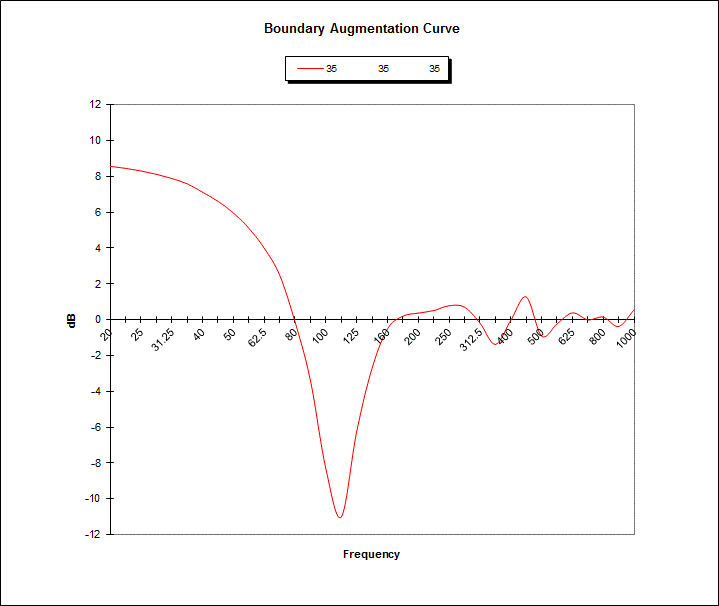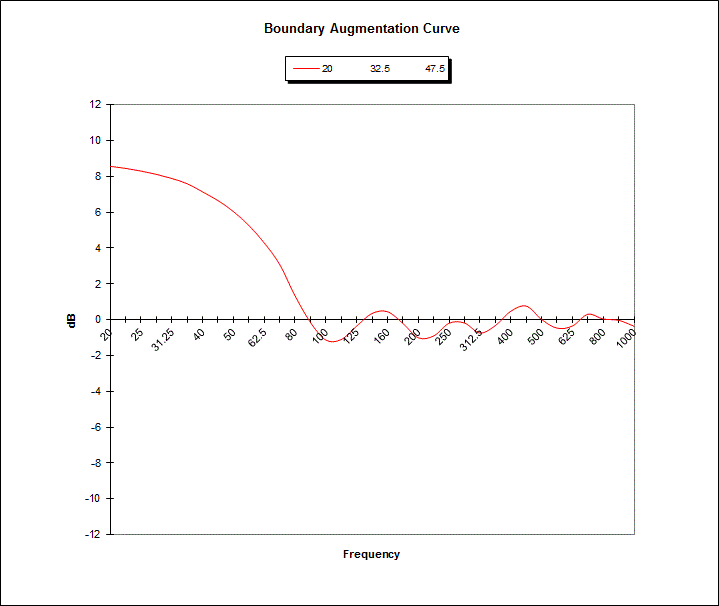 Аудио-википедия
Аудио-википедия
База знаний по hi-fi и high-end технике и комплектующим, отзывы и впечатления
Инструменты пользователя
Боковая панель
Roomgain - подъем баса на НЧ за счет комнатыНЧКДП
http://techtalk.parts-express.com/forum/tech-talk-forum/56454-boundary-gain-room-gain-questions
I found my quick boundary augmentation simulator. I can enter the distance that the speaker is from the floor, the back wall, and the side wall and it spits out one single graph that calculates the total augmentation based on the proximity to each of the three boundaries.
I should point out that I'm not an expert on this topic, but it seemed reasonably straightforward to simulate this. What follows is my attempt. If a subject matter expert notices any gross problems with this approach, please educate me on the errors of my ways. ![]() .
.
Let’s start out simple… one boundary (the floor) with a distance to the speaker set at 35 inches. Here’s the theoretical augmentation you can expect:

Notice approximately 3 dB of gain at the low frequencies from this one boundary, followed by some constructive and destructive interference starting about 80 Hz.
Now we'll add a second boundary and recalculate for the augmentation effect of two boundaries (for example the floor and the back wall), both 35 inches from the speaker:

Now you’ll see approximately 6dB of gain at the low frequencies due to these two boundaries, followed by some constructive and destructive interference. Also notice that this augmentation curve is starting to look worse.
Ok, let’s get real. Most of us will have three boundaries to worry about. The floor, the back wall and the side wall. Here’s the augmentation when the speaker is 35 inches away from each of the three room boundaries:

Yikes! We’ve got 9dB of bass augmentation, but 11dB of nastiness (deep null) thrown in there. Fortunately for us, it’s simple to remedy this problem. All we have to do is make those three distances as dissimilar as possible. I've found that a ratio of about 1: 1.625 : 2.375 works well for most full-range speakers. Like this: (20” to floor, 32.5 inches to back wall, and 47.5 inches to side wall. Ahhhhhh yes… now that’s a significant improvement over the 35«, 35», 35« in the previous example.

More to come. (Using boundary augmentation curves to optimize full-range speaker locations VS Subwoofer/ Satellite locations.)
